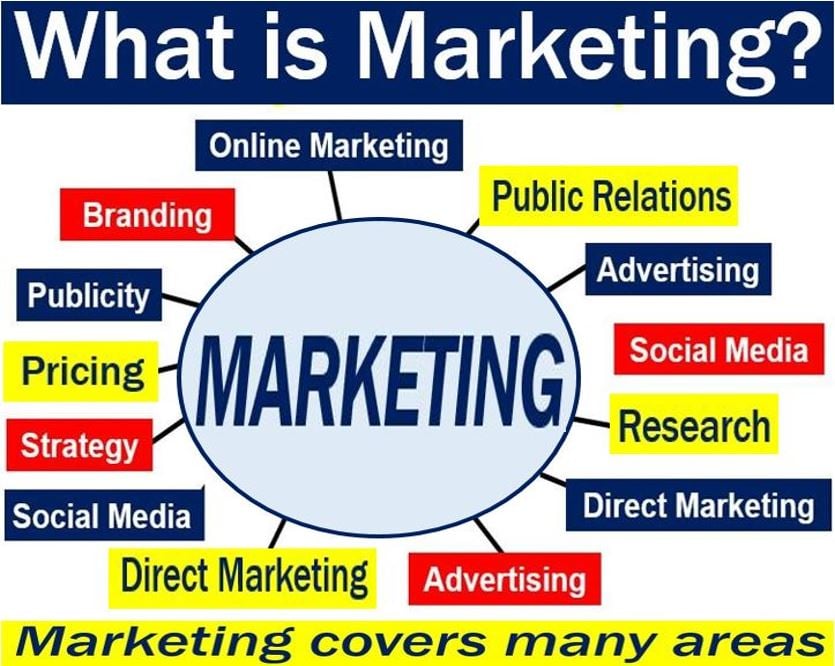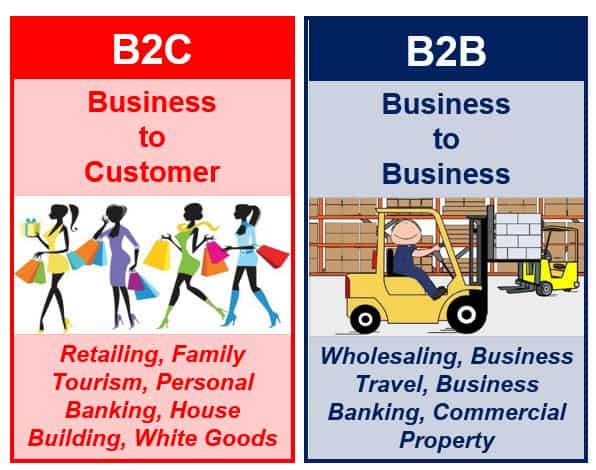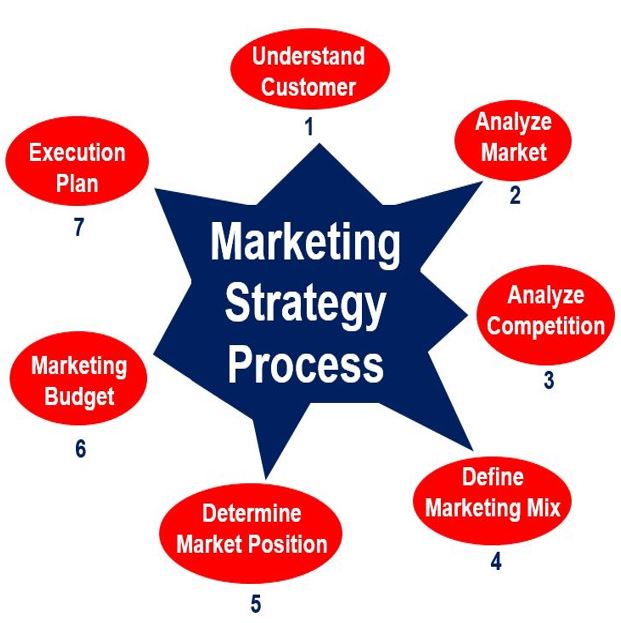Marketing is a business term that experts have defined in dozens of different ways. In fact, even at company level people may perceive the term differently. Basically, it is a management process through which products and services move from concept to the customer. It includes identification of a product, determining demand, deciding on its price, and selecting distribution channels. It also includes developing and implementing a promotional strategy incorporating both outbound and inbound marketing.

Overview
Marketing refers to the activities of a business related to buying and selling a product or service. It involves finding out what consumers want and determining whether it is possible to produce it at the right price. The company then makes and sells it.
Marketing covers a vast area of business, including:
- how you communicate
- the brand
- the design
- pricing
- market research
- consumer psychology
- measuring effectiveness
At the core of marketing is an understanding of what customers need and value. A company’s long-term success depends on learning what its customers’ needs are. It then finds ways to add value through different approaches.
Business-to-business marketing
This involves targeting other businesses. We also call it business-to-business or B2B marketing. It involves supplying other companies with products or services.
Physical products that companies sell to other businesses are ‘industrial goods.’ Industrial goods may include raw materials for companies that make plastics, yarn for use in the textile trade. It also includes aircraft for airlines and the military.
In fact, the term ‘industrial goods’ refers anything a company or organization needs and buys.

B2B services may include legal advice, management consultancy, tax consultancy, or training provision. IT services and the provision of temporary staff are also examples of B2B services. IT stands for Information Technology.
Marketing directly to consumers
We also call it B2C. The term refers to targeting the individual people who purchase products and use services. Specifically, people who bought for their own consumption.
This may include FMCGs (fast-moving consumer goods) such as food, beverages, and toiletries, or durable goods. For example, cars, televisions, refrigerators and other white goods are durable goods. ‘White goods’ are major appliances that traditionally have had a white enamel surface.
B2B + B2C marketing
Most large corporations have an integrated marketing approach. In other words, they focus on both individual consumers and businesses at the same time.
The Coca-Cola company, for example, knows that its B2C marketing must succeed. Put simply; it has to persuade supermarkets and smaller stores – B2B – to provide shelf space.
Most makers of durable goods also have an integrated marketing approach. For example, The Haier Group focuses on individual consumers (B2C). However, it also focuses on supermarkets, department stores, and other retail outlets (B2B). The Haier Group is world’s largest manufacturer of consumer electronics and home appliances.
Recruitment marketing
Recruitment marketing includes all the tools and strategies that employers use to engage, attract, and eventually hire talented people. The aim is to encourage people to want to join the organization.
The practice takes advantage of data analytics, omnichannel communication, social media platforms, and other digital marketing strategies.
Marketing strategy
A company’s marketing strategy should combine all its objectives into one integrated and comprehensive plan. In other words, it should not focus on one strategy at the expense of others.
It should use market research data to create its strategy. The company should focus on the ideal product mix to reach the optimum profit potential. The right product mix is also crucial to sustaining the business.

Remember that the best strategies are the ones that allow you to target your products and services to those who are most likely to buy.
An effective and successful marketing plan depends on a good strategy. A company’s strategy should begin with the setting of objectives that will support its overall aims.
It then needs to come up with a strategy that allows it to reach these objectives.

Fundamentally, sales and marketing are trying to achieve the same thing. In other words, they are trying to get more customers and revenues. However, they look at things slightly differently. Put simply; marketing focuses on the market, while sales focuses on the product. Sales also focuses on how to persuade consumers to like it and buy it. Some sales managers disagree with the image above, insisting that sales does continue after the sale of the product.
Typical marketing divisions
There are many divisions of marketing. Not all companies have the same names for each one. Below is a list of the most common divisions (Source: London School of Economics):
Advertising
Advertising involves promoting an idea or product into the marketplace by placing ads in the media.
Community Involvement
The term means working with the local community. This is not only good for the company’s standing locally, and as a way of growing customer loyalty, but it is also great for morale within the firm
Examples include sponsoring local events, chairing meetings, volunteering in schools or local youth centers, and belonging to local associations.
Customer Service
Basically, this involves providing assistance and advice to people who purchased the product. In many business, sellers also provide this service to customers before, during, and after a sale.
Good customer service produces satisfied customers. In other words, their experience meets or exceeds their expectations. If your competitors have good customer service and you don’t, you will probably lose market share to them.
Direct Marketing
This approach involves delivering your message directly to consumers via leaflets, forms, fliers, catalogs, as well as street promotion.
Distribution
Distribution is part of the management chain. It involves transporting one product from storage to a shop or supermarket.
Market Research
Market research is the process of gathering and analyzing information. The data will make the company more aware of how people will react to its current and future products.
Business owners are conducting market research all the time. When they talk to customers about their business, they are conducting market research. Whenever somebody tries to find out what the competition is doing, they are conducting market research.
Good market research can produce a wealth of data about the business’ products, customers, and the marketplace.
Media Planning
Media planning is closely-related to advertising. It is an advertising strategy we employ to target consumers using a range of informational outlets.
Advertising or media planning agencies usually conduct this kind of work. They find the best media outlets to reach the target market.
Examples of media outlets include the internet, posters, television, radio, physical newspapers and magazines, etc.
Product pricing
When setting the price, you should take into account how much something costs to produce and deliver. You should also consider how much competitors are selling it for, its quality, the brand, etc.
Most product prices rarely stay the same for long. Production costs may change, salaries can rise, or competitors might suddenly offer discounts or raise their prices. You need to be aware of every factor that influences price all the time.
Public Relations
“A strategic communication process that builds mutually beneficial relationships between organizations and their publics,” says the PRSA.
Sales
Sales includes planning and supporting the sales team by pushing ahead with sales targets. It also involves formulating a plan as to how to reach potential and existing customers. Salespeople aim to hit those targets.
One-to-One Marketing
One-to-one marketing involves communicating directly with each customer. The company then tailors the approach to each customer’s tastes and preferences.
Impression Management
Impression management is the process of shaping people’s perceptions of things, other people, places and events.
In marketing and sales, it means getting consumers to perceive your products or services in a good light.
The Internet and marketing
With the advent of the Internet and ad-blocking software, inbound marketing has become increasingly popular. It involves using content – newsletters, blogs, podcasts, reviews, etc. – that online users like, to lure them in.
In the past, company’s sales personnel used to be the experts. However, today the experts are the consumers.
A term that Internet marketing specialists use all the time is the ‘bounce rate.’ The bounce rate refers to the percentage of people who leave the website after visiting a page.
In other words, instead of going to another page within the same site, they leave – they bounce out. The lower the bounce rate, the better.
Global Marketing
Global marketing refers to the planning, creating, placing, and promoting a business’ goods or services in the worldwide market. Is is a specialized skill. Executives who manage to implement an effective strategy, can take their company to the next level.
During the 1960s and 1970s, many Japanese business practices emerged, which later spread across the world. In some cases, engineering and marketing overlapped. For example, Kansei Engineering is engineering that is based on human emotions. Not only do Kansei developers focus on what products can do, but also on how they make consumers feel.
Marketing principles
Marketing principles are agreed-upon marketing ideas that sellers use for a successful marketing strategy. We also refer to it as the principles of marketing.
Some companies follow the 4Ps Strategy of product, price, place, and promotion. We also refer to it as the 4P Marketing Mix. Others, on the other hand, may follow the 7Ps Strategy of product, place, price, promotion, people, physical environment, and process.
Artificial Intelligence (AI) in Marketing
AI Marketing leverages AI technologies and machine learning algorithms to gather and analyze customer data. The insights derived from this data analysis are then used to create highly personalized and optimized marketing strategies that resonate with the customer’s unique needs and preferences. AI Marketing is not just about automating mundane tasks but about making marketing more intelligent and customer-centric.
From predicting customer behavior, optimizing ad placements, generating personalized content, to improving customer relationships, AI is making inroads into every aspect of marketing. AI in marketing is like having a digital marketing assistant that works round the clock, never gets tired, and keeps getting better with time.
AI marketing is not a futuristic concept, but a reality that’s reshaping marketing strategies across the globe. Here are some ways marketers are leveraging AI to drive marketing success:
Enhanced Customer Segmentation
AI algorithms can analyze vast amounts of customer data to identify patterns and correlations that humans might overlook. This AI-powered segmentation goes beyond traditional demographic-based segmentation, allowing marketers to create highly specific customer segments based on their behavioral patterns, preferences, and buying habits.
For instance, a travel clothing retailer might use AI to identify a segment of “lux-campers” who prefer comfortable tents and high-end camping gear, or “trail enthusiasts” who prefer technically advanced equipment. These insights can be used to create highly targeted marketing campaigns tailored to each segment’s unique needs.
Personalized Customer Experience
One of the most compelling applications of AI in marketing is the creation of hyper-personalized customer experiences. AI algorithms can analyze a customer’s online behavior, purchase history, and other data to create a holistic profile of the customer.
This enables marketers to deliver highly personalized content and offers that resonate with the customer’s unique preferences and needs. Companies like Netflix and Spotify are already leveraging AI to create personalized recommendations that keep customers engaged and loyal.
Optimized Ad Spending
AI can significantly improve the efficiency and effectiveness of ad spending. Using predictive analytics, AI algorithms can determine the most effective ad placements and timings to maximize ROI.
For instance, programmatic advertising platforms leverage AI to automate the ad buying process, allowing marketers to target specific audiences at the optimal time for a competitive price.
Advanced Content Generation
AI can also assist in content creation, from generating catchy email subject lines to creating engaging social media posts. Some AI tools can even generate blog posts or articles, although these usually require human editing to ensure quality and accuracy.
Improved Sales Forecasting
AI’s predictive capabilities can also be leveraged for sales forecasting. By analyzing historical sales data and current market trends, AI can predict future sales trends with a high degree of accuracy. This can help marketers make more informed decisions about their marketing strategies and budget allocation.
Efficient Customer Service
AI-powered chatbots are becoming increasingly common in customer service. These chatbots can handle routine customer inquiries, freeing up human customer service agents to handle more complex issues. This not only improves efficiency but also enhances the customer experience by providing instant responses to customer queries.
AI Technologies Powering Marketing
Several AI technologies are powering the transformation of marketing. Here’s a closer look at some of them:
1. Machine Learning
Machine Learning (ML) is a subset of AI that involves teaching computers to learn from data. In the context of marketing, ML algorithms can analyze historical marketing data to identify patterns and make predictions about future customer behavior.
2. Natural Language Processing (NLP)
NLP is a field of AI that focuses on the interaction between computers and human language. It enables computers to understand, interpret, and generate human language, making it possible to create AI-powered chatbots and voice assistants.
3. Semantic Search
Semantic search is an AI technology that allows computers to understand the intent behind a search query rather than just focusing on the keywords. This can improve the accuracy and relevance of search results, leading to a better user experience.
4. Named Entity Recognition (NER) and neural networks
NER is an AI technique used to identify important entities (people, places, organizations, etc.) in a text. Neural networks, on the other hand, are AI models designed to mimic the human brain’s ability to learn from data. Both these technologies can be used in marketing to gain deeper insights into customer behavior and preferences.
5. Sentiment Analysis
Sentiment analysis, also known as opinion mining, is an AI technique used to determine the sentiment (positive, negative, or neutral) expressed in a piece of text. This can be particularly useful in social media marketing to gauge public opinion about a brand or product.
